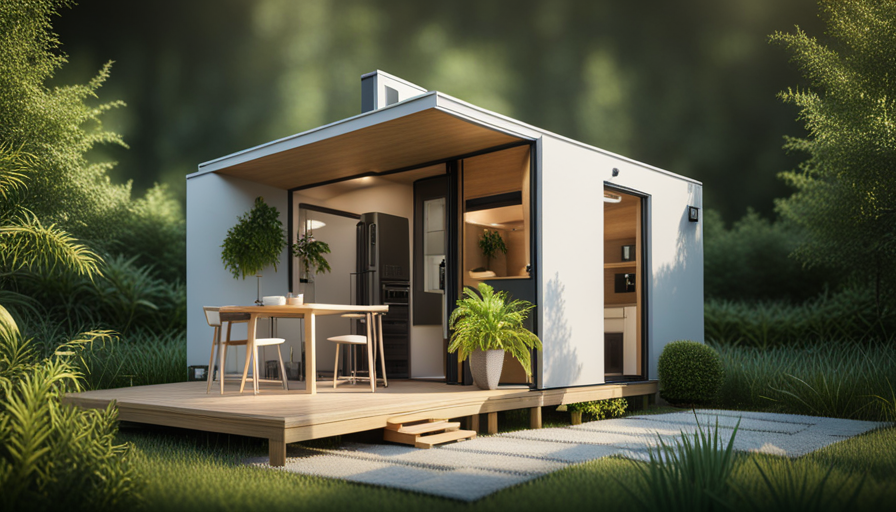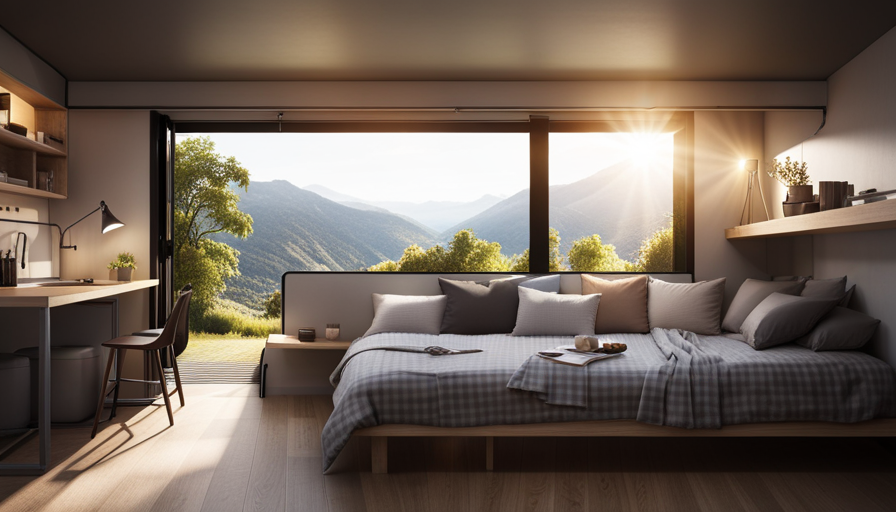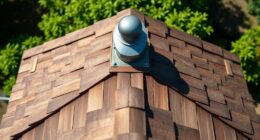So, you have decided to build a small house. Congrats to you! It’s an exciting project that provides freedom, simplicity, and a non-traditional way of living. But where do you start? Hiring professionals can be costly, and finding time for workshops in your busy schedule can be difficult. This is where books can be extremely helpful.
Yes, you heard me right – books. Those bound pieces of paper that have been around for centuries. Now, before you dismiss this idea as outdated and impractical, let me assure you that learning how to build a tiny house through books is not only possible but also highly effective.
In this article, I will guide you through the benefits of book learning, the basics of tiny house construction, different building techniques and styles, essential tools and equipment, step-by-step instructions and illustrations, practical tips and advice from experts, and even real-life examples and success stories.
So grab a cup of coffee, snuggle up with a good book, and let’s dive into the fascinating world of tiny house building!
Key Takeaways
- Learning from books provides a self-paced and convenient way to gain knowledge about building a tiny house.
- The choice of construction methods and materials depends on individual preferences, budget, and resources.
- Supplementary resources such as online tutorials, workshops, and classes can enhance the learning experience and provide hands-on guidance.
- Hands-on experience is crucial for fully grasping the skills required to build a tiny house and allows for the application of knowledge gained from books.
The Benefits of Learning from Books
Learning from books offers a treasure trove of knowledge and allows me to embark on a visual journey of discovering the benefits of building a tiny house.
One of the major advantages of learning from books is the self-paced nature of the process. I can go at my own speed, taking the time I need to fully understand each concept and technique.
Additionally, learning from books offers the convenience of being able to study from the comfort of my own home. I can access the information whenever I want, without having to worry about commuting to a physical location.
By delving into books on tiny house construction, I can gain a solid foundation of knowledge and begin to understand the basics of building my own tiny house.
Understanding the Basics of Tiny House Construction
Understanding the basics of constructing a compact home can be as easy as pie with the help of informative literature. Exploring alternative construction methods and understanding zoning regulations are crucial steps in building a tiny house. Books can provide a wealth of knowledge on these topics, allowing you to gain a thorough understanding of the process.
To emphasize the importance of these aspects, consider the following table:
| Aspects to Consider |
|---|
| Alternative construction methods |
| Zoning regulations |
| Proper insulation and ventilation |
Exploring different building techniques and styles is the next logical step in your journey towards building a tiny house. By delving into various books on the subject, you can expand your knowledge and gain inspiration for your own unique design.
Now, let’s transition into the next section and explore different building techniques and styles for tiny houses.
Exploring Different Building Techniques and Styles
Imagine yourself immersed in a world of innovative construction methods and unique architectural styles, as you embark on a journey to create your own dream compact dwelling. When it comes to building a tiny house, there are a variety of techniques and styles to explore.
From traditional stick-built structures to alternative approaches like timber framing or steel framing, each method offers its own set of advantages and challenges. Some builders opt for using different building materials such as reclaimed wood, recycled shipping containers, or even earth-friendly materials like straw bales or cob. These cost-effective alternatives not only reduce the environmental impact but also provide a unique aesthetic to your tiny house.
As you delve into the world of tiny house construction, the choice of building technique and materials ultimately depends on your preferences, budget, and the resources available to you.
Essential Tools and Equipment
Embark on the journey of constructing your dream compact dwelling by familiarizing yourself with the essential tools and equipment required for the building process. Having the right tools is crucial to ensure a smooth and efficient construction experience.
Some of the essential tools include a circular saw, power drill, framing square, tape measure, and a level. Additionally, you’ll need safety equipment such as goggles, gloves, and a hard hat to protect yourself during the construction process.
To gain a deeper understanding of how to use these tools effectively, online tutorials can be a great resource. They provide step-by-step instructions and illustrations that guide you through each stage of the building process. If you prefer hands-on learning, you can also consider finding local workshops where experienced builders can teach you the necessary skills.
By mastering the use of these tools and equipment, you’ll be well-prepared to move on to the next section on step-by-step instructions and illustrations.
Step-by-Step Instructions and Illustrations
Follow these step-by-step instructions and illustrations to easily construct your dream compact dwelling.
- Begin by laying the foundation, ensuring it’s level and sturdy.
- Frame the walls, using the provided measurements and cutting the lumber accordingly.
- Install the windows and doors, carefully following the manufacturer’s instructions.
- Assemble the roof trusses, making sure they’re properly aligned and secure.
- Finish the exterior by adding siding, roofing, and any desired architectural details.
These detailed instructions, accompanied by clear visual aids, will guide you through each stage of the construction process. Whether you’re a beginner or have some experience in carpentry, these resources will help you build your tiny house with confidence. By following these steps, you’ll be well on your way to creating your perfect compact home.
In the next section, we’ll explore troubleshooting and problem-solving techniques to overcome any challenges that may arise during the construction process.
Troubleshooting and Problem-solving
Tackle any obstacles that may arise during construction by utilizing troubleshooting techniques and problem-solving strategies. Building a tiny house requires a keen eye for detail and the ability to think critically when faced with challenges.
Troubleshooting techniques involve identifying the root cause of a problem and finding the most effective solution. This could include anything from fixing a leaky roof to resolving electrical issues.
Problem-solving strategies, on the other hand, focus on finding creative solutions to unforeseen problems. This may involve brainstorming alternative approaches or seeking advice from experts in the field.
By honing your troubleshooting and problem-solving skills, you can ensure the smooth completion of your compact dwelling. Transitioning into the next section about practical tips and advice from experts, it’s crucial to remember that building a tiny house requires a combination of practical know-how and resourcefulness.
Practical Tips and Advice from Experts
One of the most valuable pieces of advice from experts is to always prioritize functionality over aesthetics when designing and constructing a tiny home. While it may be tempting to focus on creating a visually stunning space, it’s important to remember that a tiny house needs to serve its purpose efficiently.
Here are some practical tips and expert advice to keep in mind:
- Maximize storage: Utilize every inch of space by incorporating built-in storage solutions such as hidden cabinets, shelves, and multi-purpose furniture.
- Optimize layout: Carefully plan the layout to ensure that every area has a clear purpose and flows well. Consider the placement of windows and doors to maximize natural light and airflow.
- Choose durable materials: With limited space, it’s crucial to use materials that can withstand wear and tear. Opt for high-quality, durable materials that require minimal maintenance.
- Embrace minimalism: Keep clutter to a minimum by adopting a minimalist mindset. Only include essential items and prioritize functionality over excess.
By following these practical tips and expert advice, you can create a tiny home that’s both functional and aesthetically pleasing. Transitioning into the next section, real-life examples and success stories demonstrate how these principles have been successfully applied in actual tiny house projects.
Real-life Examples and Success Stories
After gathering practical tips and advice from experts, it’s time to delve into real-life examples and success stories. Learning from the experiences of others who have successfully built their own tiny houses can provide invaluable inspiration and practical applications.
Real-life examples offer a glimpse into the challenges faced, the solutions implemented, and the ultimate satisfaction of completing a tiny house project. Case studies showcase different approaches, techniques, and design choices, giving learners a wide range of options to consider.
Success stories not only demonstrate the feasibility of learning from books but also illustrate the rewards of hard work and dedication. By studying these examples, aspiring tiny house builders can gain confidence in their abilities and envision the possibilities.
With these inspiring stories in mind, let’s explore the limitations and drawbacks of learning from books.
Limitations and Drawbacks of Learning from Books
When it comes to learning how to build a tiny house through books, there are a few limitations and drawbacks to consider.
One of the main challenges is the lack of hands-on experience that books provide. Without actually physically practicing the techniques, it can be difficult to fully grasp the skills required.
Additionally, books may not always provide enough visual guidance, making it harder to visualize certain techniques and processes.
Lastly, it’s often necessary to seek out supplementary resources, such as videos or online tutorials, to enhance the learning experience and fill in any gaps in knowledge.
Lack of Hands-on Experience
Despite the lack of hands-on experience, you can still learn how to build a tiny house through books. While it is true that practical application is crucial, books offer a wealth of theoretical knowledge that can lay a strong foundation for your learning journey. However, it is important to acknowledge the limitations of theoretical knowledge alone. Without the opportunity to physically engage with the materials and tools, there may be gaps in your understanding. To overcome this challenge, it is essential to supplement your learning with practical experience whenever possible. By incorporating hands-on activities, such as workshops or internships, you can bridge the gap between theory and practice, deepening your understanding and honing your skills. Moving forward, let’s explore the difficulty in visualizing techniques without practical application.
Difficulty in Visualizing Techniques
While books can be a great resource for learning how to build a tiny house, they do have their limitations. One of the challenges I encountered was the difficulty in visualizing certain techniques. Without hands-on experience, it can be challenging to fully understand and grasp the concepts being explained in the books.
I found myself needing more practical demonstrations to truly comprehend some of the construction methods. Additionally, there are limitations in the practical application of the knowledge gained from books. Building a tiny house requires physical skills and abilities that can only be developed through practice. It’s important to acknowledge that books alone may not be sufficient in providing the necessary skills and experience.
To overcome these challenges, it is essential to seek out supplementary resources that offer more hands-on learning opportunities.
Need for Supplementary Resources
To truly understand and master the art of constructing a tiny home, you’ll need to explore supplementary resources that offer hands-on learning opportunities. While books are a great starting point, they often lack the practical applications that can only be gained through hands-on experience.
Here are three reasons why supplementary resources are essential for aspiring tiny house builders:
- Online tutorials and videos: These resources provide step-by-step guidance, allowing you to visually grasp construction techniques and gain practical skills.
- Workshops and classes: Attending in-person workshops or classes offers the chance to learn directly from experienced builders, ask questions, and practice techniques under expert guidance.
- Building communities: Joining local tiny house communities connects you with like-minded individuals who can offer support, advice, and hands-on learning opportunities.
By supplementing book learning with hands-on experience gained through these resources, you’ll be better equipped to successfully build your own tiny house.
Supplementing Book Learning with Hands-on Experience
You’ll be amazed at how much you’ll learn about building a tiny house just by getting your hands dirty and actually doing it. While books are a great starting point, there’s nothing quite like the practical application of building a tiny house yourself. By taking on the challenge and learning from your mistakes along the way, you’ll gain invaluable experience and a deeper understanding of the process.
To help you get started, here’s a 2 column and 5 row table that outlines the benefits of supplementing book learning with hands-on experience:
| Benefits of Hands-on Experience |
|---|
| 1. Practical application |
| 2. Learning from mistakes |
| 3. Building problem-solving skills |
| 4. Understanding construction techniques |
| 5. Gaining confidence in your abilities |
By actually building a tiny house, you’ll be able to apply the knowledge you’ve gained from books and learn from any mistakes you make along the way. This hands-on experience will not only enhance your practical skills but also give you the confidence to tackle future projects. So, don’t be afraid to roll up your sleeves and dive into the world of tiny house construction!
Frequently Asked Questions
How long does it typically take to build a tiny house?
It typically takes several months to build a tiny house, depending on factors like complexity, size, and available time. Common challenges include acquiring permits, finding suitable materials, and managing construction tasks effectively.
Are there any legal regulations or permits required to build a tiny house?
Yes, there are legal regulations and building permits required to build a tiny house. It is important to research and understand these regulations to ensure compliance and avoid any potential issues during the construction process.
What are the average costs associated with building a tiny house?
Building a tiny house can cost an average of $20,000 to $50,000, depending on factors like size and materials. It can take around 3-6 months to complete. For example, a 200 square foot tiny house built with reclaimed materials cost $25,000 and took 4 months to finish.
Can I customize the design and layout of my tiny house?
Yes, you can customize the design and layout of your tiny house. There are plenty of customization options available, allowing you to create a space that suits your needs and preferences with design flexibility.
Are there any specific safety considerations when building a tiny house?
Safety precautions are essential when building a tiny house. It’s important to prioritize fire safety, electrical safety, and structural stability. Additionally, choosing high-quality construction materials can help ensure the longevity and safety of your tiny house.
Conclusion
In conclusion, learning how to build a tiny house through books can be a valuable and practical way to acquire the necessary knowledge and skills. The benefits of learning from books are evident, with the ability to access a wide range of information, step-by-step instructions, and expert advice.
However, it is important to acknowledge the limitations and drawbacks of this learning method, as hands-on experience is crucial for truly mastering the art of tiny house construction. By supplementing book learning with practical application, one can create a harmonious juxtaposition of knowledge and experience, resulting in a successful and fulfilling tiny house building journey.
I’m Theodore, and I love tiny houses. In fact, I’m the author of Tiny House 43, a book about tiny houses that are also tree houses. I think they’re magical places where imaginations can run wild and adventures are just waiting to happen.
While tree houses are often associated with childhood, they can be the perfect adult retreat. They offer a cozy space to relax and unwind, surrounded by nature. And since they’re typically built on stilts or raised platforms, they offer stunning views that traditional homes simply can’t match.
If you’re looking for a unique and romantic getaway, a tree house tiny house might just be the perfect option.










